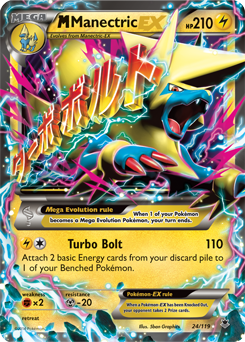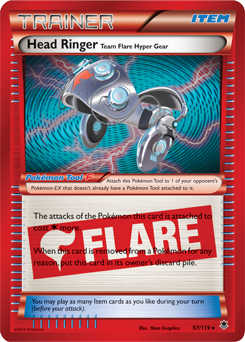Exploiting the Decks of Worlds and the Boston Open!
Hey guys, this is Grant Manley with another article for you premium members! Hopefully you are as hyped as I am because right now, we have the most diverse and open Worlds format I have ever seen. This is exciting because there are so many popular decks to choose from, yet it can also prove frustrating for someone like me who usually aims to disrupt the format and prey on the weaknesses of the main decks. Since Nationals ended, I have been thinking and planning for Worlds, trying to figure out just what the meta will be like. It’s somewhat obvious what decks will be front-runners, and I think I have most of the meta figured out.
In this article I’m going to discuss each deck that is relevant in the format and how popular it should be. Then I’m going to talk about how to exploit these decks, which may help you create a rogue or tech your deck to be better prepared for Worlds (or the Boston Open). I’m going to go over each deck in order of expected popularity.
1. M Manectric-EX
It’s no secret that I personally love Manectric, but it’s not first on the list because of bias. M Manectric-EX is an incredible card. You can build a Manectric deck with answers to just about anything. Paired with Garbodor, Manectric covers so many bases that it can’t be ignored. Manectric comes with many positive traits, and I imagine that will appeal to many players as it did for me at Nationals. 210 HP, free retreat, a lot of healing, Energy acceleration, and favorable matchups against both Seismitoad-EX and Bronzong decks make it one of the strongest options out there. Manectric is also a versatile deck that can be customized to cover most decks that seem problematic. For example, if you are worried about Fighting decks like Landorus-EX / Crobat or Primal Groudon-EX, you can pair Manectric with a few Suicune and possibly Articuno. Scared of Klinklang or Crobat? Add Garbodor! All of the benefits of Manectric will certainly incentivize droves of players to play it at Worlds and the Boston Open.
Maiming Manectric

Another reason M Manectric-EX is at the top of the list is because it’s difficult to counter, and even harder to tech against. The first main weakness of Manectric decks is its literal Weakness, Fighting Pokemon. While Manectric can be built to easily handle Fighting decks, I believe that M Manectric-EX / Garbodor will be the most popular variant. The Garbodor version, even with Empoleon, suffers tremendously against nearly every Fighting deck. Additionally, Primal Kyogre-EX decimates all Manectric variants, unless they choose to hard counter Kyogre by adding Grass-type Pokemon.
I realize that this information is deck-specific and is unhelpful to anyone deciding not to play Kyogre or Fighting. Manectric has a couple of more obscure weaknesses as well. Manectric is linear in a similar fashion to Virizion-EX / Genesect-EX, and can be disrupted in the same way. Manectric absolutely needs to get a Turbo Bolt as soon as possible, which is by the second turn unless you do something to stop it. So there’s this evil little card called Head Ringer. Head Ringer is possibly the most disruptive card to use against Manectric. It makes Assault Laser and Turbo Bolt require three Energies to use, and denies the ability to Mega Evolve without ending the turn. The Manectric player will have the opportunity to play tools to prevent Head Ringer half the time (when they go first), but Head Ringer can still be used throughout the game to disrupt other Manectrics. Of course, since nearly every other deck relies on EXs and Pokemon Tools, Head Ringer is useful in other matchups as well. You could play Crushing Hammer instead of Head Ringer, but that usually works better as a four-of, which takes more deck space. I also would rather stay away from flip cards if I can.
The last problem facing Manectric decks is the inability to deal heavy damage. The basic Manectric-EX caps at 120 damage, and the Mega caps at 110. You can capitalize on this by using healing cards to change the tempo of the game. Potion, Max Potion, Pokémon Center Lady, you name it. Anything that can heal can disrupt Mega Manectric. You can easily turn 2HKOs into 3HKOs or erase attack damage altogether. So long as your deck can naturally deal with Manectrics at a reasonable pace and your attackers have more than 120 HP, you can beat Manectric this way. This strategy isn’t totally reliable because Manectric decks can actually heal too. Max Potions on both ends can turn the game into a war of attrition, and Rough Seas can put in the work if left in play. One strategy often employed by Manectric players is to get two or three Megas out, and retreat between them to maximize Rough Seas healing. If you can’t OHKO M Manectric or bump Rough Seas from play, you probably lose the game right there (unless you’re running Kyogre).

2. Seismitoad-EX
Whether you love it or hate it, Seismitoad-EX is sticking around for Worlds and the Boston Open. What Seismitoad doesn’t have in matchups it makes up for in sheer disruption. Quaking Punch is a one-of-a-kind attack that can hamper any deck, which can make perceived unfavorable matchups like Primal Kyogre-EX and M Manectric-EX actually winnable. I hate to use such a bland word to describe it, but Seismitoad is just so good. Not many decks can withstand a constant onslaught of Hypnotoxic Lasers and Hammers. Virbank City Gym proves useful not only for its effect, but also as a Stadium bump. Seismitoad wouldn’t have much of a presence if it didn’t have its own Stadium to counter Rough Seas and Sky Field. This goes perfectly with Item lock, preventing opponents from thinning their deck to find crucial resources to counteract this evil concoction. Seismitoad almost always comes with either Crobat or Garbodor, but the variants are similar enough that I feel justified in dumping them in one category. I expect both variants to be heavily represented at Worlds and the Boston Open.
Toppling the Toad
From a matchup standpoint, Seismitoad-EX stands almost no chance against Primal Groudon-EX. Seismitoad-EX / Crobat can defeat it, but I’d still put my money on Groudon. Both M Manectric-EX decks and Metal M Rayquaza-EX decks can defeat Toad as well, but depending on the build I’d find it hard to say either of them win a majority of the time. The obvious solution is to use Grass-types, but ones that work competitively are in short supply. Fortunately, just like with Manectric, Seismitoad has weaknesses that aren’t matchup related.
Seismitoad-EX has a low damage output, starting at a measly 30. It relies on two Items and a Stadium to make its attack power relevant. With all of the pieces in play, it still caps at 80, and can be 110 if you don’t heal the Poison or bump Virbank City Gym. Of course, once in a blue moon you will see a Grenade Hammer for up to 180, but we’ll ignore that for now. One thing to keep in mind is that Golbat and Crobat can jack up these numbers fairly easily, but they won’t be turning Quaking Punch into OHKO material, so the concept is the same. Ignoring Bats, Quaking Punch can deal up to 110 damage after two turns of Poison. Sound familiar? Just like M Manectric with its damage cap of 110, you can hamper the Toad’s progress with healing cards. Unfortunately, most of the healing cards in the format are Item cards, so you’ll have to resort to Supporters like Pokémon Center Lady and AZ.

As mentioned above, Seismitoad relies on two Items (Muscle Band and Hypnotoxic Laser) and the Virbank City Gym Stadium to deal damage. It also heavily relies on Double Colorless Energy. If you can effectively limit any of these pieces, you can severely weaken Seismitoad decks. To deny their Items, you can use your own Seismitoad-EX to buy time while you set up as much as you like. You could theoretically use Trevenant, but that’s fairly deck specific and its ability is shut down by Garbodor. To win the Stadium war you mostly have to get lucky, but against Seismitoad / Crobat, Ninetales can be an effective solution. Ninetales would make the Toad player rely heavily on Bats for damage. The final piece of the Toad puzzle is Double Colorless Energy, a Special Energy. Cobalion-EX can help disrupt those in any deck using Metal or Rainbow Energy, but it is somewhat difficult to mobilize and stay safe from Poison. If you can get a Float Stone on it early you will likely have a good time against Toad. You can also use Xerosic, which has utility in many other matchups, and can remove a Tool from Garbodor if you need to use Abilities for a turn. One Xerosic won’t turn the matchup, but two or even three could.
The rest of this article contains more of the above, for not two, not three, but eight more decks that I expect will be present in the upcoming tournaments. While learning tricks to beat Toad and Manectric is certainly useful, you’re going to have to keep reading to get the inside intel of all the other solutions I’ve come up with to handle the diverse metagame at huge tournaments such as Worlds or the Boston Open. Think of what you’ve just read, multiplied by five!
So are you ready to improve your game right here and right now?
This concludes the public portion of this article.
If you'd like to continue reading, consider purchasing a PokeBeach premium membership! If you're not completely satisfied with your membership, you can request a full refund within 30 days.
Each week we post high-quality content from some of the game's top players. Our article program isn't a corporate operation, advertising front, or for-profit business. We set our prices so that we can pay the game's top players to write the best content for our subscribers. Each article topic is carefully selected, goes through multiple drafts, and is touched up by our editors. We take great pride in our program!

